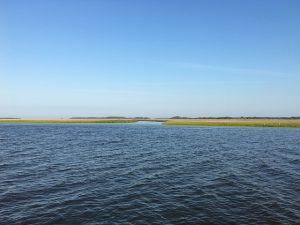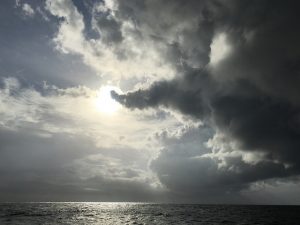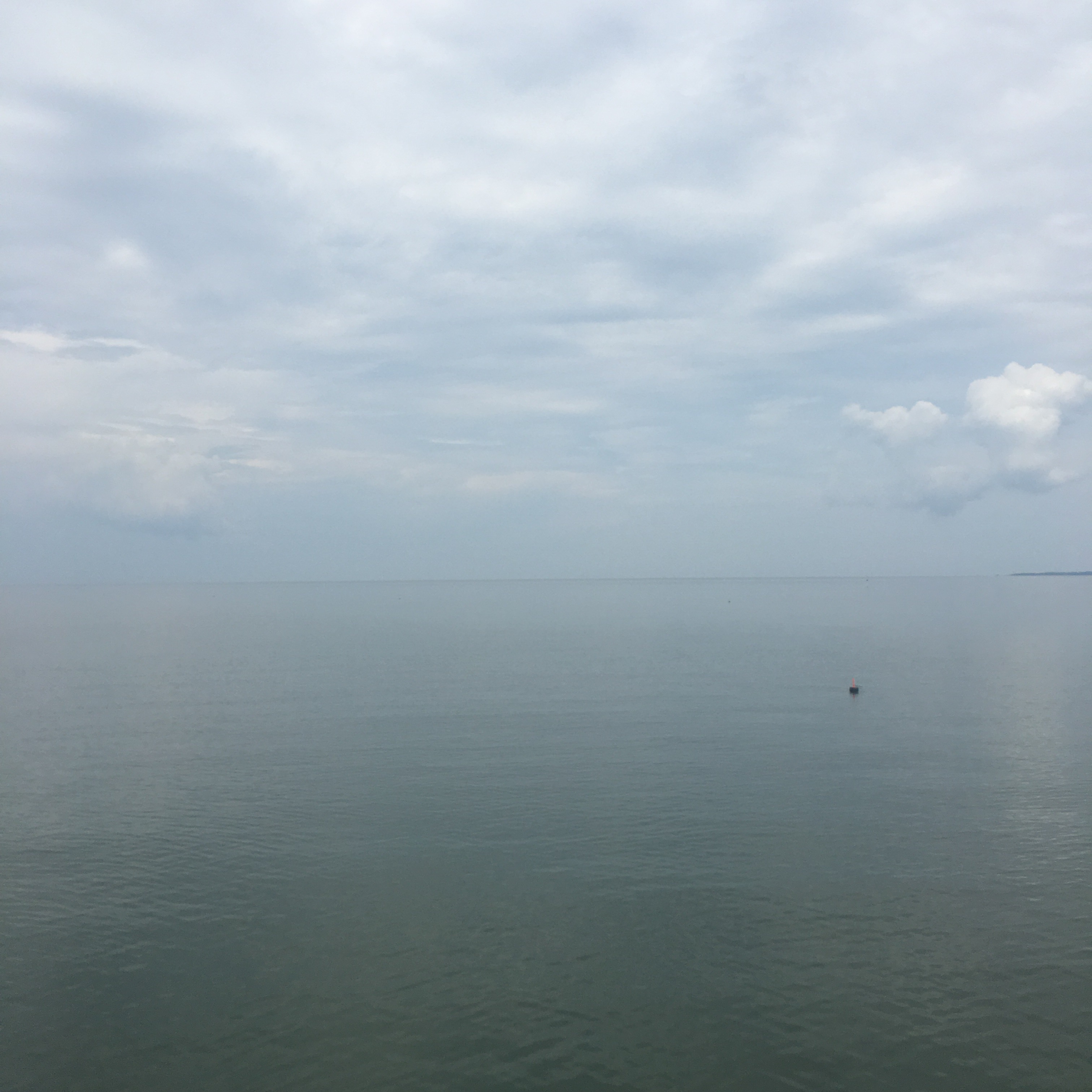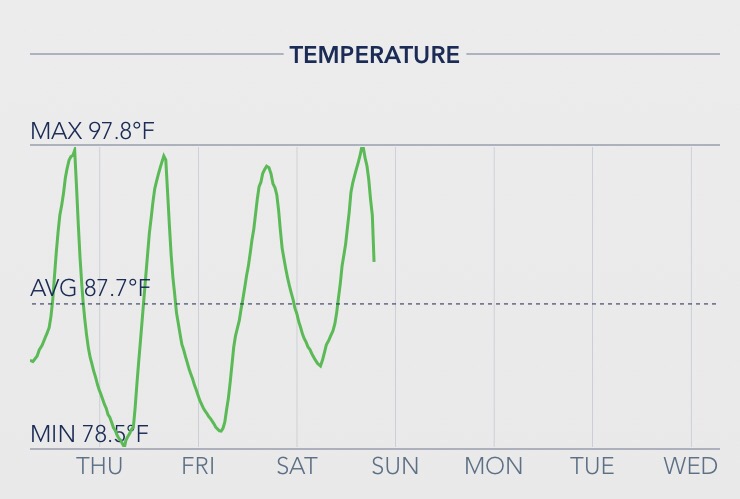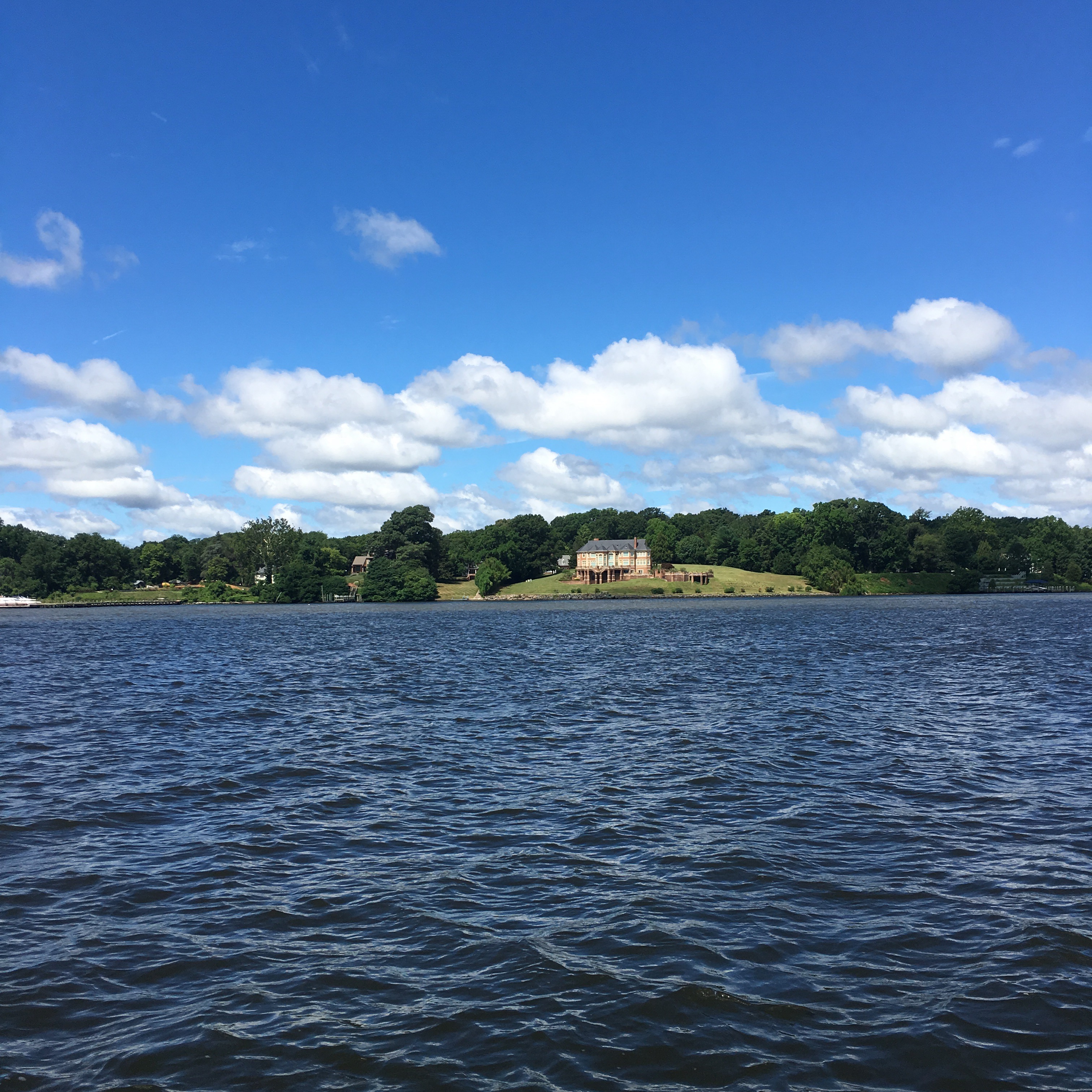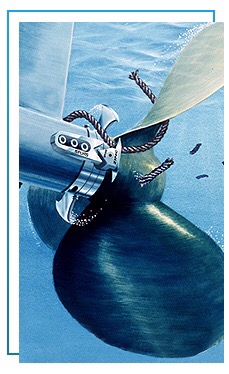There are old pilots and there are bold pilots, but there are no old bold pilots
Completely my own undoing. A pleasure boat centered in the river overtook at a slow courteous pace. A risk averse person would seek to maximize distancing but with bravado I saw chance. I angled toward with the notion to get close and catch his wake. The power boat’s trailing wave has energy which, if rightly timed, imparts a forceful push forward and a free ride. Paddle furiously to match speed and experience a few seconds of surfing (in theory).
But in a cavalier half hearted effort, poorly executed; the encounter was more beam to and less quartering astern. I was out of position and [on the backside of the intended wave] over she went. The power boat accelerated away and there I was bobbing in the water. I glanced at them receding and remember actually hoping that they had not witnessed my dunking. I would have been profoundly embarrassed to have had them comeback.
The sea kayak has greyhound length for tracking and speed but lacks girth. Like a canoe or worse — very tippy. There is some natural roll resistance but care and respect is important.
*New* to the kayaking sport, I’d only viewed a self-rescue on TV but had never done one. My training exposure was 12 minutes of demonstration where a fit 20 something, YouTuber adroitly slithers back aboard.
The 90 degree flip plays in slo-mo because your brain fires a spread of thought synapses like: Oh no! and: I can’t believe this is happening! and: It IS actually happening — how ridiculous — Fool! And then you splash. There is some initial shock of going from having been in-control to out-of-whack and from dry to wet. The water is somewhat of a relief from the hot summer but immediate concern is for my $$$ phone in immersion. The kayak, with phone still secure on deck, is easily righted to dry orientation. I’m conscious of my Birkenstock $$andals dangling by big toes and fixing to float off of them as I dog paddle. I scoop them off my feet and place them into the cockpit.
With one arm draped over my craft small kicks and the other arm in a faint breast stroke I creep toward the muddy bank. The idea is to sideline out of the traffic lane and I suppose subconsciously gain shallower water. Nagging wild thought while swimming is for the attention I must be drawing. It’s a tidal river and alligator sightings within are not unusual.
The winding river is beautiful and picturesque loops back and forth on its lazy way to the coastline. It is flanked by marsh and Smooth Cordgrass. The term river is misleading as its natural flow is slow and easy. The current ebbs and flows with the lunar tide with a tide table being a necessary planning tool. The brackish water is dark reddish-brown from tannins but mostly tinted by the grey-black mud on waters edge. No light gets through to what lurks.
I take stock. Paddle has not floated off. It is tied to a safety line for such and event. Rescue gear is on forward deck under bungee cord. Tilley hat still on my head. The flotation device I’m wearing has not been inflated (CO2 rip cord) which turns out to be a good thing because any increase in bulk on my chest will interfere with the “slither” back into the cockpit.
Self Rescue
The maneuver will require the hull to be longitudinal to my heft and I will attempt to mount from astern over the transom. The first foot or two of distance is easy enough. The bow stem rises lifting up some, in pendulum (teeter- totter) as the pointy aft end sags from my weight.
Hands grasp for the cockpit coaming for grip and then with torso further along, the seat back rest or forward bracketry; whatever you can cling to. I had to improvise this part as I felt my way. What wasn’t expected was progress impeded by life jacket and wet clothing dragging across the aft deck bungee. With forethought no objects were stored there upon but everything on my chest, lanyard whistle, snaps and buckles frustratingly managed to snag into this cordage impediment. Hooked.
Extricating inch x inch and finally sprawled over cockpit center. I raised my torso to ride astride cowboy style, plunked my duffer down into the seat and swung my feet and legs aboard. Whew!
Whole again, reunited and catching breath, I reach forward to starboard to pull the bilge pump out from under the webbing on that deck. Simultaneous lean, tug to free the pump, and the water still inside sloshed its weight in unison and I flip again. Note to self: Easy does it. Be methodical, Take your time.
The hand operated plunger pump, for getting the water out, was not effective. The mechanical motion was tiresome and lengthy. Slow going. I determined in the moment that a bailing scoop or small bucket would be apropos.
Self Rescue Deux
With stamina remaining and newly found experience and having drifted all the way ashore I was ready to try again when a fellow kayaker rounded the bend and saw my plight. Offering moral support and a steadying hand on my bow I climbed back in again as before. Great success.
Instead of going solo it is a commendable option to have a companion when possible to assist in time of need and to offer backup. For other times a little extra contingency planning and knowledge is requisite. A swimming pool is a could place for a first time see it for yourself.
AND, further advice, Don’t Get Cocky!












